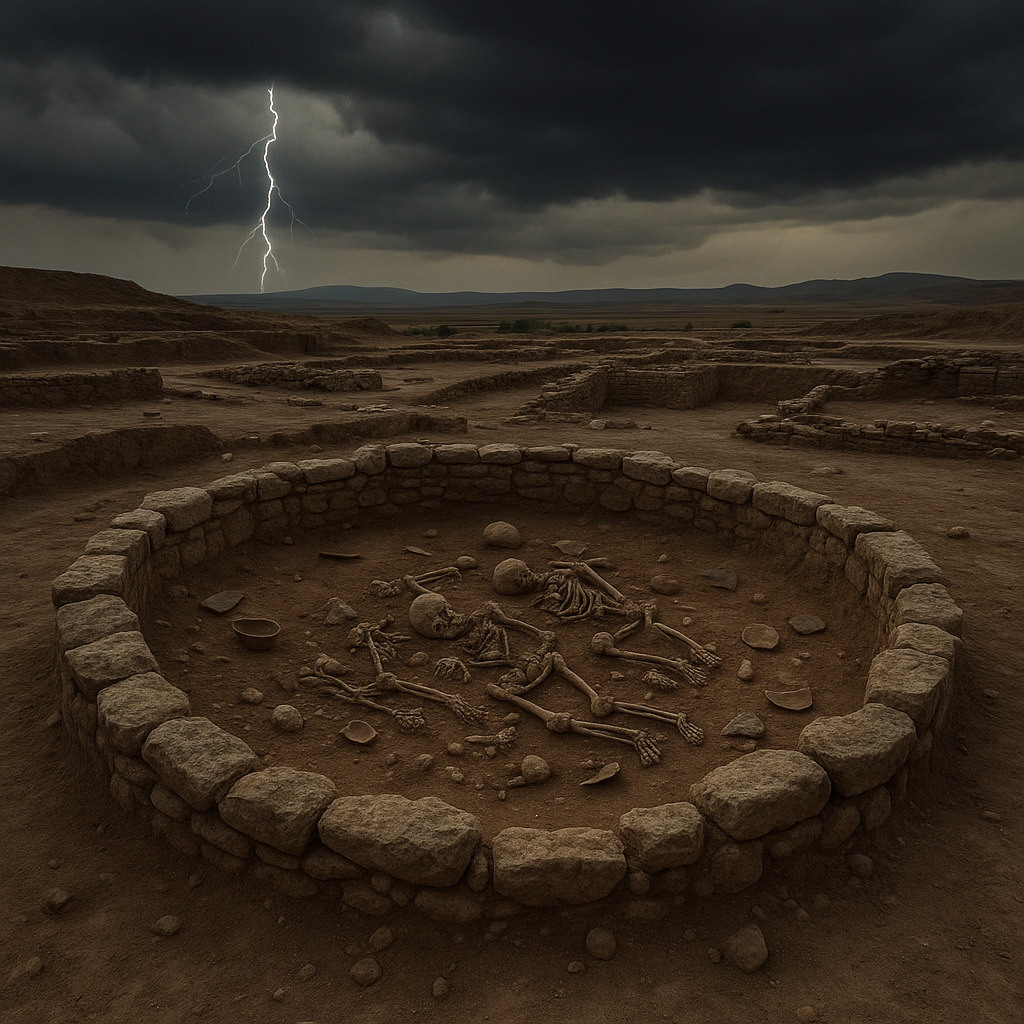🔍 The Lost Children Circle: Uncovering a Bronze Age Ritual in Anatolia
Seven small bodies, no graves. Just a circle of stones, pottery shards, animal bones, and ash. Who were these children? And why were they left there, nameless and unmarked?
A circle in the ground. And no answers
Usakli Höyük isn’t a name that echoes with grandeur or myth. It’s a remote, dusty site, perched between sky and silence on the Anatolian plateau. But in 2025, this humble place offered something extraordinary: the remains of seven children, not buried in tombs, but deposited — or perhaps abandoned — inside a circular ritual structure dating back to the Bronze Age.
There were no coffins, no grave goods. Just bones — delicate, fragmented — lying among ceramic shards, animal remains, and traces of fire. Not a funeral. A scene. A symbol. A lost story.
🧬 Not a grave. A ritual.
The structure is unmistakably circular — not by chance. In ancient symbology, the circle stood for eternity, balance, cosmic order. But what does it mean to place infant bodies inside one?
These bones have been dated to the Middle to Late Bronze Age (17th–12th century BCE), during the height of the Hittite Empire. If these children weren’t buried, they may have been offered. To whom? To the Storm God of Zippalanda? Or to something older, darker — a force that never made it into the texts?
🦷 One tooth, many truths
Among the bones, archaeologists recovered a single intact tooth. It may seem small — but it’s monumental. That tooth allows for advanced DNA and isotopic analysis, revealing possible kinship, diet, health, and even geographic origin.
A tooth is a fossil of life: it speaks long after the tongue has stilled.
🧒 Sacred or sacrificial?
In the ancient world, childhood was a liminal state. Children were not fully “people” — not legally, not spiritually. And yet, in many cultures, they were seen as closer to the divine: still unfinished, still sacred, still pliable.
Perhaps that’s why these children were chosen. Not to be remembered, but to intervene — ritually, cosmically. To appease something.
🌩️ Zippalanda: city of gods… and lost children?
This site may be Zippalanda, a city known from Hittite texts as the center of storm-god worship. Each year, great seasonal rites were held there.
What if these children were not random victims of illness or misfortune? What if their presence in the circle was seasonal, ceremonial, deliberate?
The placement of the remains, the absence of known funerary customs, and the proximity to sacred architecture all point to intentional ritual deposition — not burial.
🌀 The mystery is the message
The Lost Children Circle does more than document ancient practices. It haunts us. Because now, as then, the image of abandoned children in the dirt forces us to confront the shadow side of belief.
History isn’t just kings and empires. It’s mute rituals, nameless victims, and questions that hurt more than they answer.
And perhaps that’s what archaeology is really for.
Not to comfort.
But to disturb.








Leave a Comment